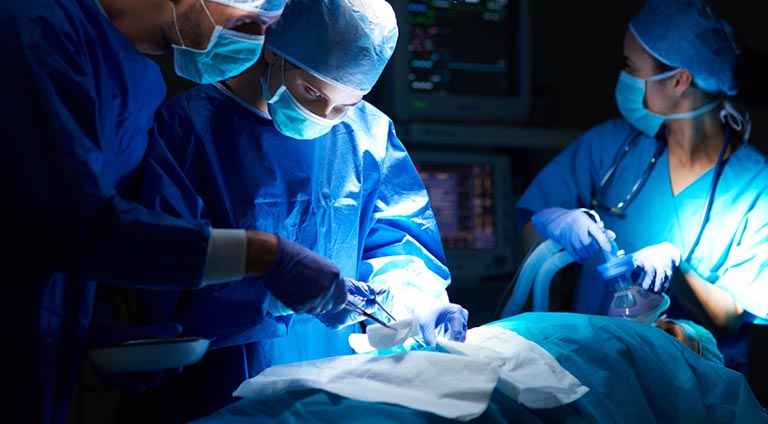Over the past thirty years, technology and innovation have transformed the medical field. Today, surgical procedures differ drastically than the past. If your doctor has informed you about conducting an elective or emergency laparoscopic surgery, do not worry. Understand the procedure of laparoscopic surgery and learn its advantages in comparison to traditionally open surgeries.
UNDERSTANDING LAPAROSCOPIC SURGERY: THE EASY WAY
Laparoscopic surgery is also called minimally-invasive surgery and keyhole surgery. A relatively modern technique of performing abdominal and pelvic surgeries, the procedure of a laparoscopy includes making tiny incisions (as small as 0.5 cm) with the help of a camera. It requires the expertise of a GI surgeon.
1. WHAT IS THE PROCEDURE OF LAPAROSCOPIC SURGERY?
The laparoscopic surgery is dependent on the laparoscope. It is a long, fiber-optic instrument with an attached camera. With the help of the laparoscope, doctors can see real-time images on the screen and operate on the patient easily.
Once you are given anesthesia, the gastrointestinal surgeon will make an incision and insert a small tube to inflate your stomach with carbon dioxide. It allows your surgeon to have more room for the procedure. After the stomach inflation, the surgeon inserts laparoscope to perform the surgery. Generally, 2-4 incisions are made. After the surgery is over, the doctor will remove the instruments and close the incisions via stitches or surgical tape along with bandages.
2. WHAT TYPE OF LAPAROSCOPIC SURGERIES ARE PERFORMED?
There are different laparoscopic surgeries performed in the abdominal cavity such as:
- Laparoscopic cholecystectomy for removal of the gallbladder
- Laparoscopic common bile duct exploration for removal of ston
- es from bile duct
- Laparoscopic hernia surgery
- Laparoscopic appendectomy for surgical removal of the appendix
- Laparoscopic sleeve surgery for weight loss (bariatric surgery)
- Gastric bypass
- Laparoscopic surgery for hydatid cyst of liver
- Laparoscopic surgery for stomach cancer and colorectal cancer, etc.
Laparoscopy is used for treating ailments of:
- Gallbladder
- Common bile duct
- Appendix
- Small intestine
- Large intestine (colon)
- Spleen
- Pancreas
- Liver
- Stomach
- Rectum
- Reproductive organs in the pelvic region
3. WHAT ARE THE BENEFITS OF LAPAROSCOPIC SURGERY?
GI doctors are choosing laparoscopic surgery because it offers multiple benefits in comparison to open surgeries. A few advantages of laparoscopy include:
- Surgeon gets magnified image of the patient’s body which makes the surgery more precise and safer. It also reduces damage to surrounding organs.
- Reduced organ exposure to the external environment which means less risk of infection. Laparoscopy guarantees safety.
- It reduces the possibility of hemorrhage and loss of blood in large quantities, thus decreasing the need for blood transfusion.
- Your surgeon will ensure smaller incisions for reduced pain and less post-operative scarring. It means less requirement for pain medication.
- The keyhole surgery guarantees shorter recovery time so that you can resume work quicker than before.
- Laparoscopy can be done as an outpatient procedure and you can go home the same day as your surgery. Thus, it reduces your cost.
A BOON FOR PATIENTS!
Laparoscopy has truly transformed the way surgical procedures are conducted today. It promises faster recovery and reduced pain. It means you can get back to your work, family and life easily. As the hospital stay is shorter and post-operative care is minimal, doctors can treat more patients and save them from innumerable diseases.





